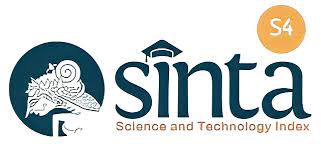Penggunaan Majas Perbandingan dalam Novel Luka Cita Karya Valerie Patkar
DOI:
https://doi.org/10.37680/linguafranca.v4i1.7143Keywords:
Comparative figures of speech, Luka Cita, NovelAbstract
This study examines the utilization of comparative figurative language in Luka Cita, a novel by Valerie Patkar, through a stylistic analytical framework. The research centers on three dominant types of figurative expression—metaphor, personification, and simile—investigated for their contribution to semantic enrichment, emotional resonance, and literary aesthetics. Employing a qualitative descriptive method, the data were acquired through meticulous textual analysis and classification, grounded in Masruchin’s (2017) taxonomy of comparative tropes. The analysis identifies 24 occurrences of metaphor, 14 of personification, and 12 of simile throughout the novel. These stylistic elements perform significant narrative functions: metaphors provide a concrete representation of abstract feelings; personification attributes human characteristics to inanimate objects, thereby intensifying the psychological depiction of characters; and similes create direct analogies that amplify narrative imagery. Such figurative constructions are not employed solely for decorative purposes but as integral tools for constructing meaning and enhancing the reader’s interpretative engagement. This investigation contributes to literary stylistics, particularly in modern Indonesian prose. It demonstrates how Valerie Patkar strategically employs language to articulate intricate emotional states, internal conflicts, and thematic depth. Furthermore, the effective deployment of comparative figures of speech strengthens the emotional rapport between the narrative and its audience. Hence, the findings affirm that figurative language is pivotal in deepening literary interpretation and unveiling stylistic intent.
Downloads
Published
How to Cite
Issue
Section
License
Copyright (c) 2025 Ulfatun Khasanah, Muslim

This work is licensed under a Creative Commons Attribution-NonCommercial 4.0 International License.
Lingua Franca: Jurnal Bahasa dan Sastraallow the author(s) to hold the copyright without restrictions and allow the author(s) to retain publishing rights without restrictions, also the owner of the commercial rights to the article is the author.
License:
- Attribution: You must provide an appropriate name, include a link to the license, and certify that changes have been made. You can do this in an appropriate manner, but do not imply that the licensor supports you or your use.
- Share Alike: If you compose or make derivatives of these materials, you must distribute your contributions under the same license as the original materials.
- No additional restrictions: You may not use legal provisions or technological means of control that legally restrict others from doing the things this license allows.
You are free to:
- Share, copy, and redistribute this material in any form or format.
- Adapt, modify, and create derivatives of this material for any purpose, including commercial purposes.
- The licensor cannot revoke the above terms as long as you comply with the terms of this license.
Creative Commons Attribution-ShareAlike 4.0 International License (CC BY-SA 4.0).



